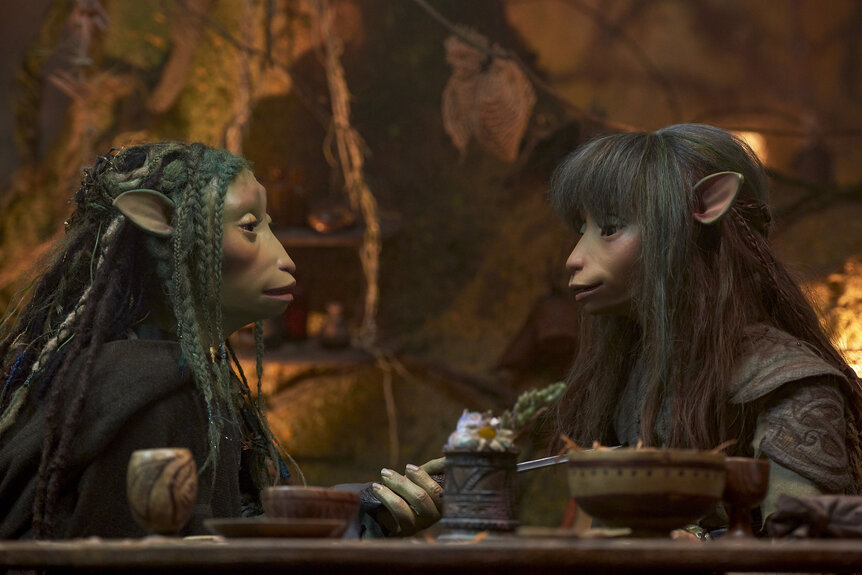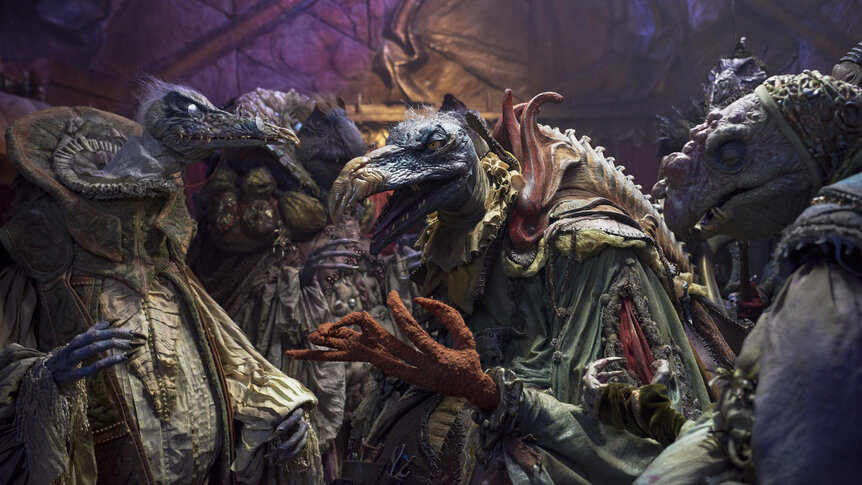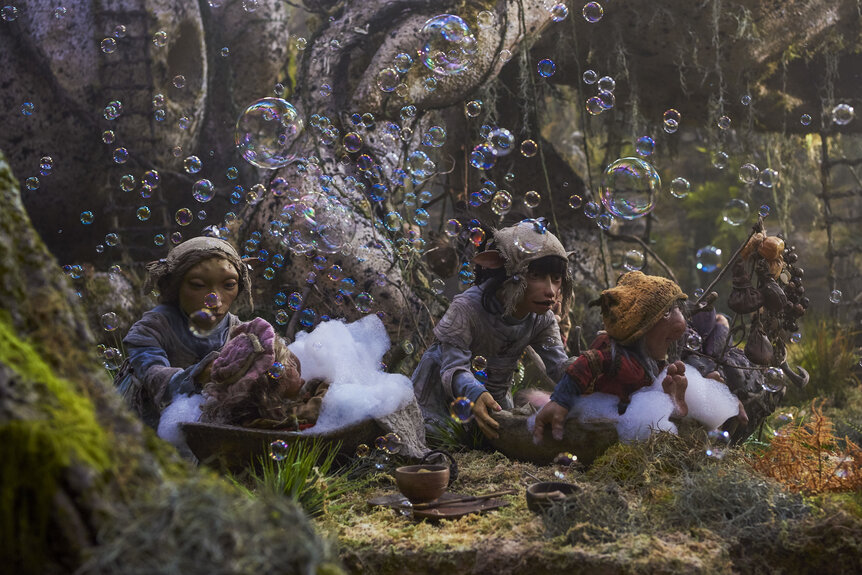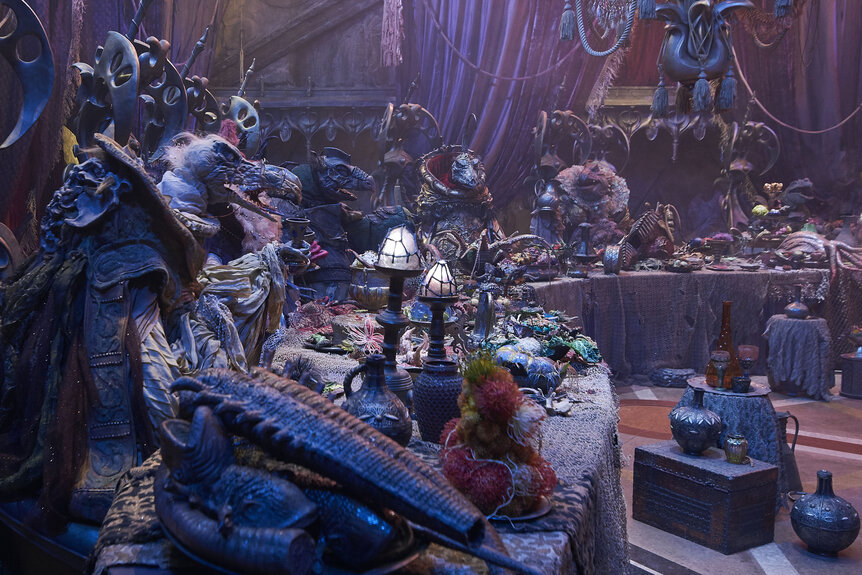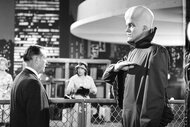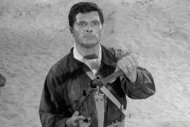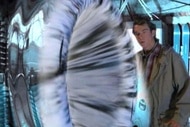Create a free profile to get unlimited access to exclusive videos, sweepstakes, and more!
How the new Dark Crystal used modern tech on Henson's old-school puppetry
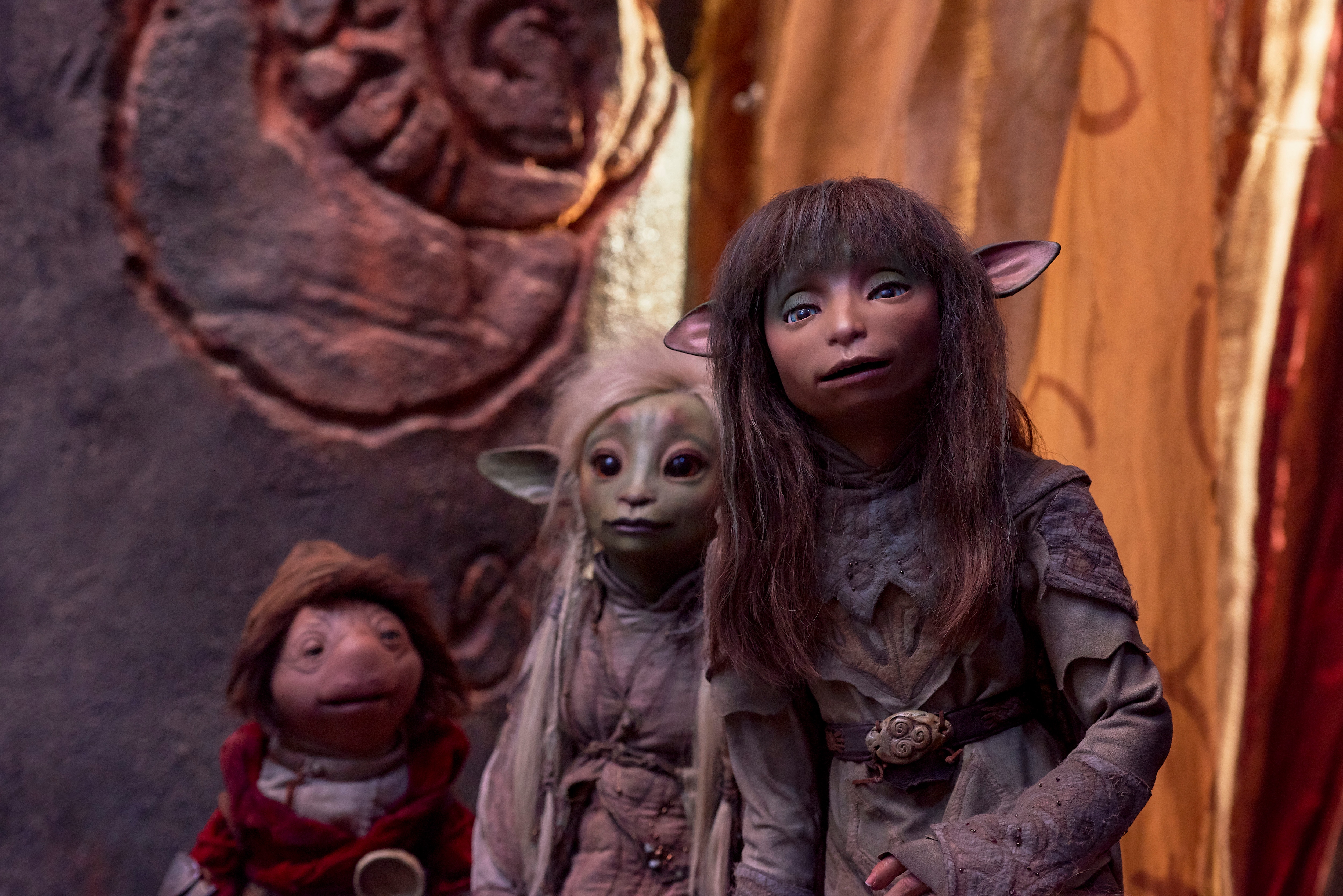
The new Netflix-produced prequel to The Dark Crystal promises a return to old-school puppet techniques, but there's some sleight of hand to that claim. The technology used to both construct and control puppets has advanced by leaps and bounds since Jim Henson and Frank Oz made the original 1982 cult hit fantasy film, as have viewer expectations in the age of CGI. These new realities presented both opportunities and challenges to the team working on the new series, The Dark Crystal: Age of Resistance, which hits the streaming service on Friday.
Set in the magical, Middle-earth-ish world of Thra, the original Dark Crystal followed the adventures of the last two remaining Gelflings, a once-thriving race of creatures who look like the offspring of Yoda and a beautiful elf (Wendy Froud, who designed the Gelflings with her husband Brian, also worked with Oz on the Jedi master puppet for Star Wars: The Empire Strikes Back). Their quest brought them to a castle occupied by the Skeksis, a frightening clan of human-sized muppet vultures who controlled the titular life-giving crystal. The Jim Henson Company had preserved some of the Gelflings and Skeksis puppets in its archives, but according to puppeteer Dave Chapman, the inner workings of puppets have changed so much over the past 40 years that the old creatures served more as reference and inspiration for the new versions than practical assistance.
"They're full of old-school mechanics, which would be controlled by bicycle cables and triggers, so not so much animatronic, heavy stuff," Chapman tells SYFY WIRE. "We had to achieve the same effects but with the modern way of doing things, which is a lot of remote control, animatronics, and radio-controlled stuff."
In a way, using more advanced, semi-robotic puppetry is a fitting tribute to the original Dark Crystal, the production of which saw Henson, Oz, and their team of artists and engineers pioneer early versions of the animatronics that are so dominant today.
The new Gelflings and Skeksis puppets were built with modern internal architecture, which offers the tools to manipulate the most minute aspects of puppets' faces. And yet, because The Dark Crystal: Age of Resistance was in part an exercise in nostalgia and a faithful recreation of the style of a bygone era, director Louis Leterrier and his team of puppeteers were careful not to overindulge in the new capabilities.
"We [had to] make sure that we're not suddenly having every eyeball popping out, waggling around the jaws and teeth and tongues," Chapman says. "There's so much you could do, but, honestly, they'd be weird."
The new Gelflings, like the originals, have jaws that are controlled by the hands of their puppeteer, which provided an important baseline; most of the time the audience is watching the mouth of a puppet move, and making no obvious change in those mechanics buys a lot of leeway. Whereas the original Gelflings required four puppeteers, this time around they were able to cut that number in half. That's largely because the rest of the face could be manipulated from afar; puppeteers controlled Gelflings' ears and lower eyelids via remote control, adding some subtle extra signs of life, which help immensely on HD and 4K TVs.
With a narrative that includes multiple members of each of the seven different Gelfling tribes, those little customizations were critical to differentiating, as well. It's easy enough to recognize the lead Gelfling, the castle guard named Rian (voiced by Taron Egerton), and varying skin colors help as well, but when you've got a tribe with three very similar-looking sisters, it can get tricky.
The Skeksis, meanwhile, were given remote-controlled eyes that moved back and forth. Some of the facial features on the haggard evil birds were controlled by puppeteers, but whereas in the past they used the aforementioned bicycle chains and pulley systems, they were able now to 3D-print custom-fit handpieces and equipment to control more precise mechanisms.
Still, Chapman says his team consciously avoided any extensive facial twinges or menacing scowls — the Skeksis, he reasons, were terrifying enough as it was (their faces also leaked far more snot and mucus than the originals — a fact the writing team of Will Matthews and Jeffrey Addiss point out with pride).
Their operation took a massive team effort. In medium and close-up shots, each Skeksis had a team of puppeteers working to control its movements: one to work the remote controls off-camera and two to create the bulk of the body movements. Because the creatures are so large — about 6 feet tall — the lead Skeksis puppeteers would wear the massive costumes, a la Big Bird. Inside those very heavy, broiling costumes, they used their right hands to control the mouths, moving the lips while reciting the dialogue (which was later replaced by voice actors); their left hands controlled the Skeksis' corresponding arm.
Meanwhile, a smaller puppet performer reached around the Skeksis' back and operated the right arm of the giant costume.
If that sounds complicated, imagine directing scenes with up to 10 Skeksis sitting around a table, stuffing their filthy beaks and arguing like the demented, bloodthirsty birds they are. That meant coordination among 30 puppeteers, two-thirds of whom were in front of the camera.
It was actually even more complicated when Gelflings, which were about 3 feet tall, shared scenes with the Skeksis; and harder still when the smallest creatures, the 2-foot-tall Podlings, were in on the action as well. In total, there were 20 main puppets and 90 more secondary characters built for the show.
"Anything you do with these puppet characters, specifically these because of the huge difference in scale, is complicated," Chapman says. "Every shot needs to be thought about. Every shot needs to be discussed. Every movement with a prop. It's crazy complicated, which is always quite fun because no one's really doing it."
The Dark Crystal team had 12 main puppeteers, of which Chapman was one, and they brought in other puppeteers from the British puppetry community to help with the right arms, remote controls, and background characters. Any of the core dozen could and would play any of the Skeksis, even if they did have their preferences and specialties. Chapman liked to play the imposing, bloodthirsty Skeksis Emperor, despite the costume being, as he described, "really heavy, really painful, and really hot."
Chapman compared the Skeksis suit, with its harnesses that secured around the waist and shoulder, to "wearing a rucksack with a 5-year-old in it."
Production designer Gavin Bocquet was charged with faithfully recreating old Dark Crystal sets, designing massive new ones, and facilitating the different requirements of the small army of puppets and performers. He borrowed another Henson trick by constructing a set that was 4 feet high, with the entire floor set out of panels that covered up a chasm that sank down to ground level. Beneath each panel were different rostrum platforms, Bocquet explains, which made it feasible for the actors in the Skeksis costumes to operate on more or less the same height as the Gelfling and Podling puppets.
"The idea was to make it look like a seamless enterprise, and we came up with our own style. It's not rocket science, but it's a quite clever Rostrum platform system that could be interchanged pretty quickly," Bocquet says, proud of his handiwork. The system required a full team of floor panel movers, crowding the proceedings even further.
"It was also very funny," Bocquiet adds, laughing. "A lot of very squashed puppeteers."
Every scene had to be aggressively storyboarded, especially those with action elements. Leterrier served as his own camera operator and spent a lot of time in the writers' room, helping to plot out the action beat for beat — it was one thing to have characters of different sizes next to one another, but as co-writer Jeffrey Addiss says, "if they walk together, it gets tricky ... what's very hard is multiple characters of different heights walking in the same space."
As production continued, they would tweak scenes in the scripts to make less of those simultaneous strolls necessary, creating the kind of shortcuts that are not obvious to the viewer but save hours of work for the team.
There were plenty of digital effects throughout, but Leterrier was singularly focused on keeping as much of the action untouched by CGI as he could. How he handled the sheer glut of people on set during those larger puppet scenes was a mix of ingenuity, camera tricks, and a bit of silliness.
"Remember the Austin Powers scene where he's naked and they have plants hiding it?" Leterrier asks, laughing at his own comparison between the satire about a sex-obsessed secret agent and his own, far more wholesome puppet adventure. "It was kind of the same thing, I used plants and stuff to hide the puppeteers and change cast, and then go to a wide shot, where you never miss the legs."
For the most part, they stuck with middle and tight shots of the characters; Leterrier said he studied regular live-action films and took note of how infrequently they offered full-body shots of their protagonists. When they did have to shoot wide, the floorboards remained in place and smaller actors wore Skeksis costumes, with the sidelined lead performers manipulating their facial features via remote control.
A second puppeteer would help the Skeksis move, and then be digitally removed in post-production. Wide-shot Gelflings and Podlings, meanwhile, were done with traditional stick puppets. Occasionally, when flying was involved — female Gelflings have wings, while the males are earthbound — Leterrier's visual effects team stepped in to create them in post-production. There would have been no shame in utilizing the digital shortcut more often, as Leterrier and his crew had just over a year to shoot 10 full hours of TV; by contrast, Henson and Oz took about five years to get their 90-minute version of The Dark Crystal to the big screen. But working with real puppets was always the goal, and while it made their 180 shooting days infinitely more complicated, it also led to a lot of solid memories and funny moments.
"You know what I discovered, what people love the most?" Leterrier asks, knowing full well the answer will surprise. "When you throw a puppet. In Episode 4, when Rian trips backward and he goes down the hill? We shot this over and over because the crew was laughing so hard. They were like, 'Do it again, do it again!'"
The Dark Crystal: Age of Resistance hits Netflix on August 30.
